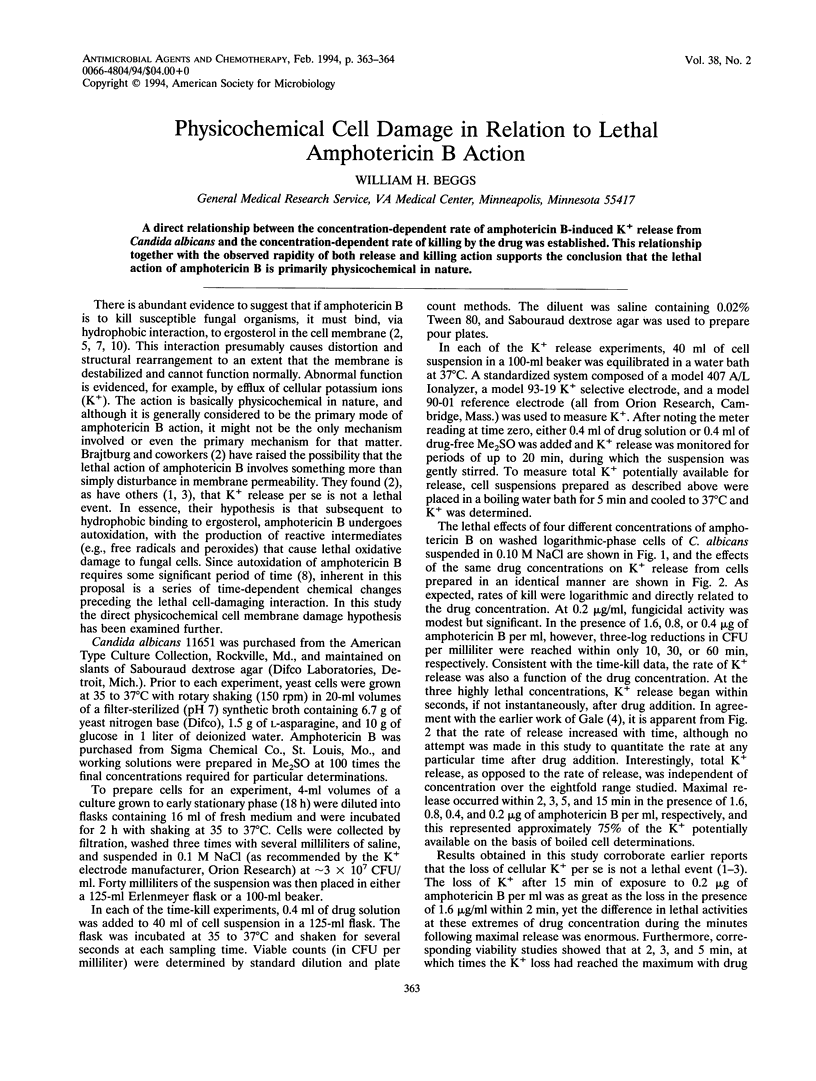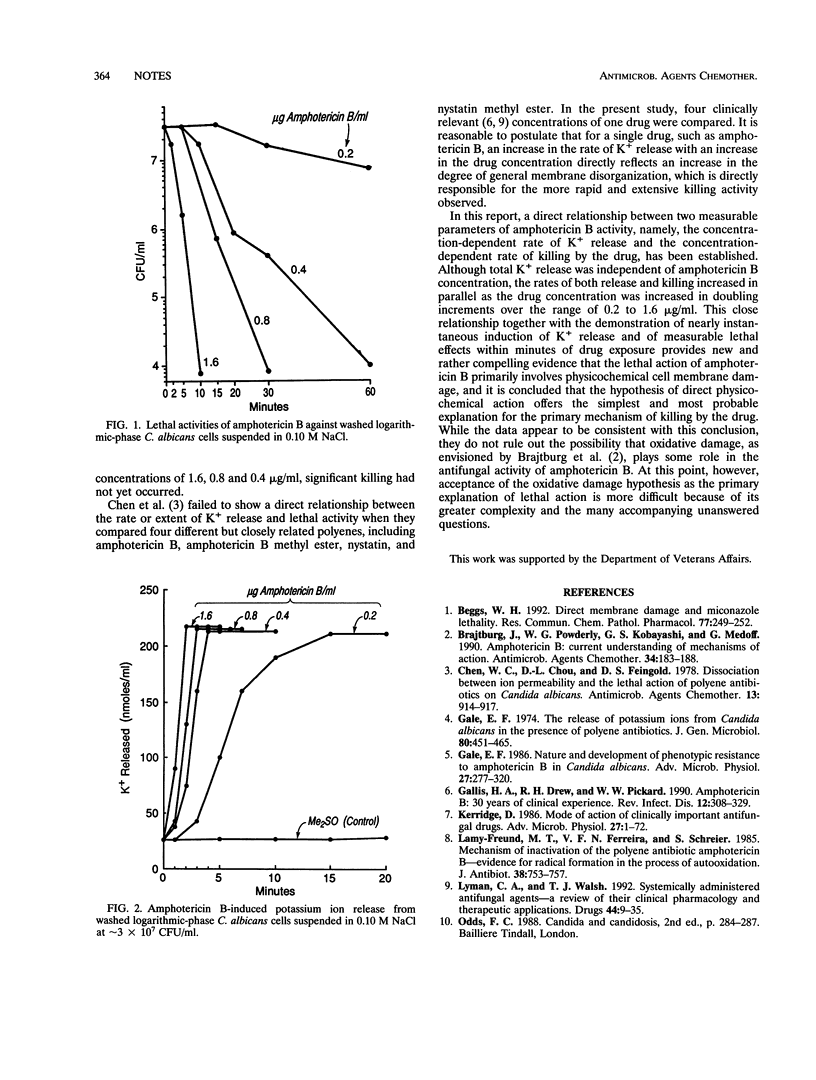Abstract
A direct relationship between the concentration-dependent rate of amphotericin B-induced K+ release from Candida albicans and the concentration-dependent rate of killing by the drug was established. This relationship together with the observed rapidity of both release and killing action supports the conclusion that the lethal action of amphotericin B is primarily physicochemical in nature.
Full text
PDF

Selected References
These references are in PubMed. This may not be the complete list of references from this article.
- Beggs W. H. Direct membrane damage and miconazole lethality. Res Commun Chem Pathol Pharmacol. 1992 Aug;77(2):249–252. [PubMed] [Google Scholar]
- Brajtburg J., Powderly W. G., Kobayashi G. S., Medoff G. Amphotericin B: current understanding of mechanisms of action. Antimicrob Agents Chemother. 1990 Feb;34(2):183–188. doi: 10.1128/aac.34.2.183. [DOI] [PMC free article] [PubMed] [Google Scholar]
- Chen W. C., Chou D. L., Feingold D. S. Dissociation between ion permeability and the lethal action of polyene antibiotics on Candida albicans. Antimicrob Agents Chemother. 1978 Jun;13(6):914–917. doi: 10.1128/aac.13.6.914. [DOI] [PMC free article] [PubMed] [Google Scholar]
- Gale E. F. Nature and development of phenotypic resistance to amphotericin B in Candida albicans. Adv Microb Physiol. 1986;27:277–320. doi: 10.1016/s0065-2911(08)60307-0. [DOI] [PubMed] [Google Scholar]
- Gale E. F. The release of potassium ions from Candida albicans in the presence of polyene antibiotics. J Gen Microbiol. 1974 Feb;80(2):451–465. doi: 10.1099/00221287-80-2-451. [DOI] [PubMed] [Google Scholar]
- Gallis H. A., Drew R. H., Pickard W. W. Amphotericin B: 30 years of clinical experience. Rev Infect Dis. 1990 Mar-Apr;12(2):308–329. doi: 10.1093/clinids/12.2.308. [DOI] [PubMed] [Google Scholar]
- Kerridge D. Mode of action of clinically important antifungal drugs. Adv Microb Physiol. 1986;27:1–72. doi: 10.1016/s0065-2911(08)60303-3. [DOI] [PubMed] [Google Scholar]
- Lamy-Freund M. T., Ferreira V. F., Schreier S. Mechanism of inactivation of the polyene antibiotic amphotericin B. Evidence for radical formation in the process of autooxidation. J Antibiot (Tokyo) 1985 Jun;38(6):753–757. doi: 10.7164/antibiotics.38.753. [DOI] [PubMed] [Google Scholar]
- Lyman C. A., Walsh T. J. Systemically administered antifungal agents. A review of their clinical pharmacology and therapeutic applications. Drugs. 1992 Jul;44(1):9–35. doi: 10.2165/00003495-199244010-00002. [DOI] [PubMed] [Google Scholar]


